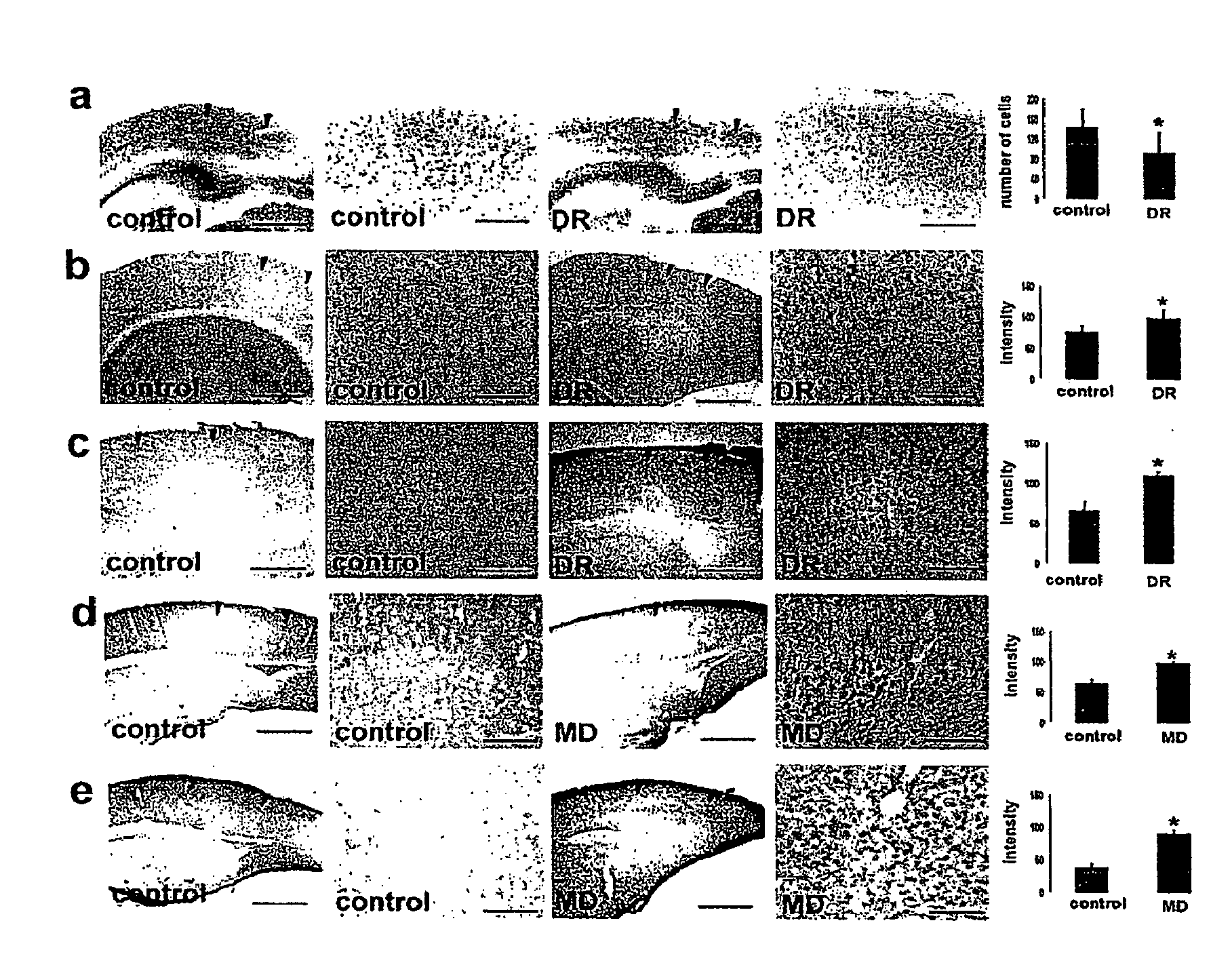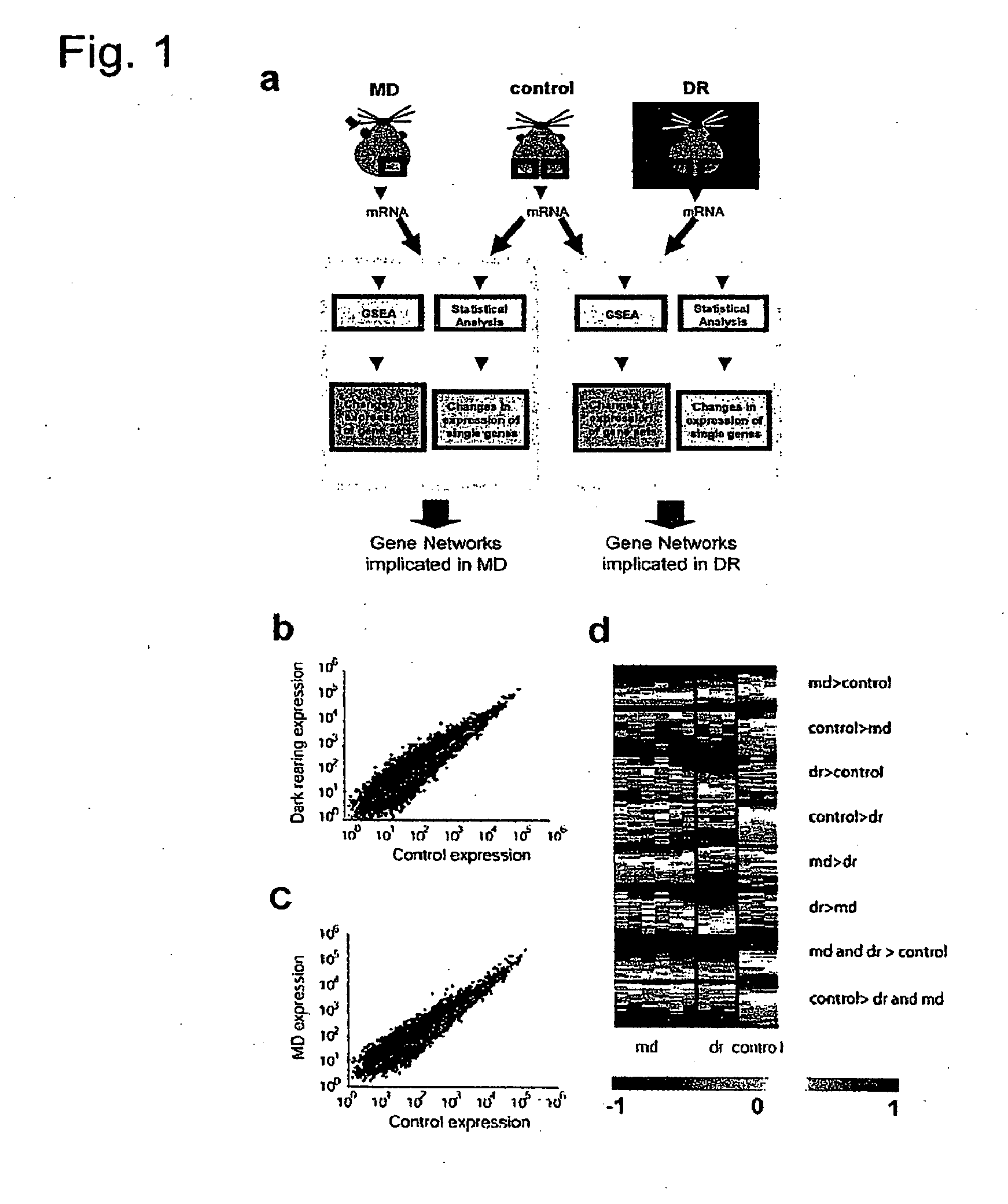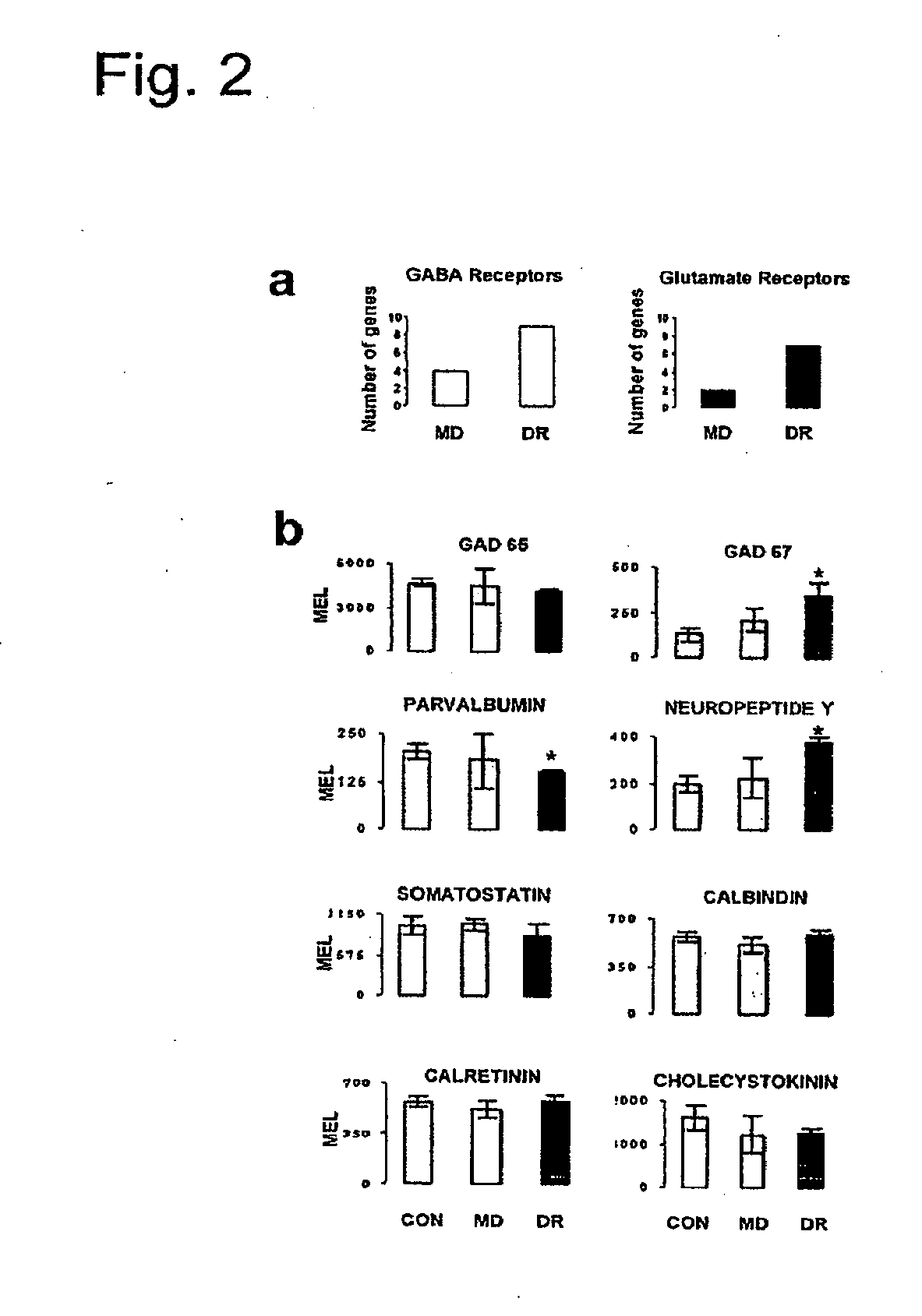Identifying and Modulating Molecular Pathways that Mediate Nervous System Plasticity
- Summary
- Abstract
- Description
- Claims
- Application Information
AI Technical Summary
Benefits of technology
Problems solved by technology
Method used
Image
Examples
example 1
Identification and Analysis of Genes that are Differentially Regulated Under Visual Deprivation Paradigms
Materials and Methods
[0266]RNA Preparation and Microarray Analysis
[0267]Studies were performed in mice (129 / SvEv) at the peak of the critical period28, postnatal day (P) 27. All animal protocols were approved by MIT's Committee on the Care and Use of Animals and followed NIH guidelines. For monocular deprivation (MD), animals were anesthetized with avertin (0.016 ml / g) and the eyelids of one eye sutured (at P11-12 for 15-16 days for microarray analyses). For dark-reared (DR) animals (aged P27-30), the procedure was the same described above, with the exception that the animals were anesthetized in darkness and not exposed to light until deeply anaesthetized; in these mice only the binocular response was evaluated and compared to that in control animals.
[0268]In a first set of experiments we extracted total RNA from V1 of normally reared P27 mice (control, n=3 samples), from V1 of ...
example 2
Identification of Gene Sets and Pathways Enriched in Genes that are Differentially Regulated in Visual Deprivation Paradigms
Materials and Methods
[0287]Gene Set Enrichment Analysis (GSEA) considers even small variations in all the mRNA probes of a group of genes, thereby assessing the enrichment of the whole gene set, and is relevant for detecting modest but coordinated changes in the expression of groups of functionally related genes. Such an analysis has particular value when an increase in the activity of several genes in a set could be more important than the strong activation of a single gene in a molecular cascade. Furthermore, the genes in the set typically share some functional or structural properties. Different gene sets have different sizes (for example, the gene set “Channel-passive-transporter” has 238 probes, while the “IGF1 pathway” has 46 probes), and all the probes corresponding to a single gene are reported in each gene set. A recent description of the method44 was ...
example 3
Expression of Selected Proteins Encoded by Differentially Expressed Genes
Materials and Methods
[0294]Immunohistochemistry
[0295]Mice were anesthetized and transcardially perfused with a solution of 4% paraformaldehyde. The appropriate brain hemispheres were removed and equilibrated in 30% sucrose in PBS. Coronal sections containing visual cortex were cut using a freezing microtome. Immunohistochemistry for GluR1 (1:500, Upstate), IGFBP5 (1:500, USBiological), CaMK2alpha (1:500, Sigma), PhosphoCREB (1:500, Cell Signaling), activated Stat1 (1:500, Abcam), parvalbumin (1:1000, Chemicon), calretinin (1:500, Chemicon), somatostatin (1:300, Chemicon), neuropeptide Y (1:400, Chemicon), synapsin 1 (1:500, Chemicon), IGF1 (1:250, Chemicon), GAD 67 (1:400, Chemicon), IGF1R (1:500, Upstate), PI3K—catalytic subunit 110 (1:400, Upstate), phosphorylated-Akt (1:250, Cell Signaling), was carried out as described elsewhere82,83. For each staining, analysis was repeated in parallel for control and depr...
PUM
| Property | Measurement | Unit |
|---|---|---|
| Time | aaaaa | aaaaa |
| Volume | aaaaa | aaaaa |
| Volume | aaaaa | aaaaa |
Abstract
Description
Claims
Application Information
 Login to view more
Login to view more - R&D Engineer
- R&D Manager
- IP Professional
- Industry Leading Data Capabilities
- Powerful AI technology
- Patent DNA Extraction
Browse by: Latest US Patents, China's latest patents, Technical Efficacy Thesaurus, Application Domain, Technology Topic.
© 2024 PatSnap. All rights reserved.Legal|Privacy policy|Modern Slavery Act Transparency Statement|Sitemap



